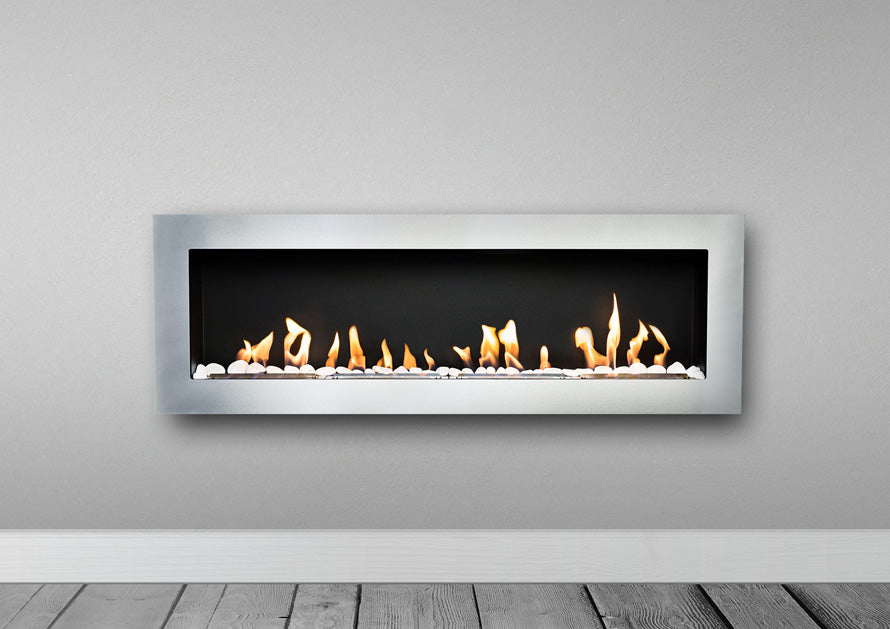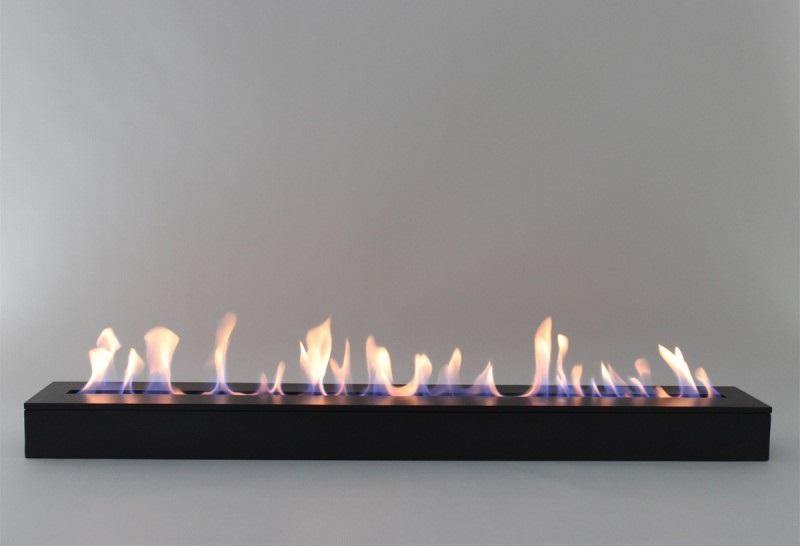
Want to buy a bio-ethanol fireplace? What do you need to know?
A bio fireplace (i.e. an ecological fireplace) is a handy solution that is available in more and more houses and apartments. How it works? What are the biggest benefits? We answer the most frequently asked questions.
A bio-fireplace is gaining popularity, especially in apartments in an apartment building, due to its ease of installation. The living fire that we bring into our homes makes the interior cozy and allows you to relax perfectly.
Until recently, only the owners of single-family homes could afford a fireplace. Nowadays, however, the owners of the little M in the block do not have to give it up, since the bio-fireplace appeared.

Bio fireplace or electric fireplace?
The main disadvantage that speaks in favor of a biofireplace is that electric fireplaces have poor flame quality and high energy consumption. However, installation is almost as easy because both types of fireplaces require no exhaust pipes or chimney. However, electric fireplaces are not as mobile as bio fireplaces. The need for a permanent energy source requires the installation of an electric fireplace insert near the socket.
The big advantage of electric fireplaces is the use of a remote control. This allows us, without getting up from the chair, to adjust the flame effect, brightness, heating and other options depending on the model. However, if we focus on the climate, the biofireplace must meet our expectations.

Is a bio fireplace a good alternative?
A biofireplace is nothing more than a fuel-burning fireplace. Wood or briquette, which we use to light a traditional fireplace, has been replaced by biofuel in liquid or gel form. The suffix "bio" is not just a marketing ploy, such devices do not produce smoke, exhaust fumes or ash. Burning a bio-fireplace for 5 hours is equivalent to the carbon dioxide emissions simultaneously exhaled by three adults.
By use and the possibility of installation, we distinguish the following types of ecological fireplaces:
Freestanding bio fireplaces
Ecological fireplaces with a full hearth, stable base and high mobility. Their main advantage is that everyone has access to fire.
Hanging bio fireplaces
Easy installation and functionality. As the name suggests, these ecological fireplaces are designed in such a way that they can make our time more pleasant by hanging them on the veranda or low above the floor.
Corner bio fireplaces
Built into the wall, corner bio fireplaces can be opened on both sides. Useful when decorating rooms with an irregular arrangement of walls.
Table bio fireplaces
Mobile, small and perfect for barbecues or evenings in the garden.
Built-in fireplaces
They have only been reduced to the fireplace so that you can design your own bio fireplace.
Various shapes, rich designs and the latest technologies allow us to choose from many proposals for every type of interior. The lack of additional installations and connections to the chimney ducts gives the apartment owners a lot of space for installation. Biofireplaces increase the room temperature by about 2 to 5 degrees, but they cannot be used as the main source of heating in a given room.
The so-called 3rd generation Bio Fireplaces, whose design combines the properties of a convection fireplace and an accumulation oven. This means that the fireplace actually has a lot of heating power and gives you an image of a fire burning inside it. The flue gases from the oven of the insert are removed thanks to ceramic channels or base plate discs that create the accumulation mass, which retains heat for up to several hours.
How does a bio fireplace work?
The construction of a bio-fireplace is not complicated. The housing is made entirely of stainless steel, covered with paint resistant to high temperatures. In addition, tempered glass, MDF panels, concrete and ceramics are used for the production of ecological fireplaces.
Bio fireplaces have a built-in ethanol burner. Once we have the tank "full", all you have to do is light the fire and it's done! However, if we want to extinguish the flame in the bio-fireplace, it is sufficient to turn off the oxygen supply. For this purpose, each set is supplied with a special handle for controlling and extinguishing the fire. It looks a little different in each set, but it always performs the same function. You can "smother" the fire with it or use it to close the lid built into the fireplace. We recommend leaving the lid closed until the bio-fireplace is burning again.

Biofireplace - advantages and disadvantages
Advantages of bio fireplaces
The variety of models, sizes and shapes makes it easy to install a biofireplace in almost all circumstances.
There is no need to build special ventilation shafts, and drafts ensure any movement of the device.
You can use the bio fireplace outside.
Disadvantages of biofireplaces
Relatively high costs of biofuel.
Due to the low heating capacity of a bio fireplace, it will never be used as an independent heating source.
The room with the bio-fireplace must be regularly ventilated.
Bio fireplace - what do you need to know before buying a bio fireplace?
When buying a biofireplace, first pay attention to what material it is made of. The materials must be fire resistant. Already at home, the device should be placed away from flammable objects. There is a "living fire" in the bio-fireplace, so it is good to place it in a place that is not easily accessible to children or animals.
Lighting the fireplace is very simple, but requires attention because spilling biofuel can cause a fire. If liquid is spilled while filling the container, clean the surface thoroughly before lighting.
Attention! Under no circumstances add biofuel to the hot burner! If the fire spreads despite taking precautions, do not extinguish it with water. If a fire extinguisher is missing, use a blanket or other thick material to prevent the fire from spreading further.
Biofuel for an ecological fireplace
An important point when using a biofireplace is choosing the right biofuel. Among the most popular on the market are the biofuels Lux Fire and Top Flame, which have a lower price.
Bioethanol, which is burned in a bio-fireplace, is available in liquid or gel form. The gel version is usually sold in the form of cans that are placed in the device and set on fire. Pour the liquid version into a special container and set it on fire with a long lighter.
It is also possible to add a few drops of essential oils for aromatherapy purposes. In some models it has been decided to use special scented feeders.
The burning time depends on the type of burner and the level of fuel supply to the container. A liter of biofuel costs on average 2 to 3 euros, it is enough for 3 to 9 hours of burning.
How much does a bio fireplace cost?
The prices of bio-fireplaces depend on the size, design or material they are made of. The simplest and smallest models that can be placed on the table can be purchased for only from 50 euros. Larger and more impressive ecological fireplaces cost at least 500 euros. It is important to check before purchasing whether the fireplace has the necessary certificates and approvals.


